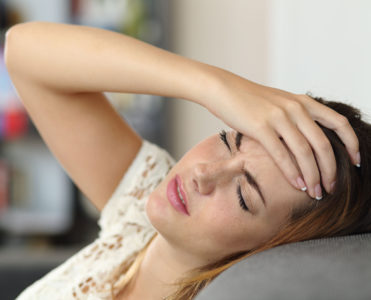 A headache can ruin your whole day, which is why it’s important to prevent headaches from developing and take some steps to treat them when you feel one coming on. However, not all headaches are the same, and you need to really understand what type of headache you are dealing with in order to pursue the optimal treatment. In today’s blog, we take a closer look at four of the most common types of headaches and how each is treated.
A headache can ruin your whole day, which is why it’s important to prevent headaches from developing and take some steps to treat them when you feel one coming on. However, not all headaches are the same, and you need to really understand what type of headache you are dealing with in order to pursue the optimal treatment. In today’s blog, we take a closer look at four of the most common types of headaches and how each is treated.
Common Types Of Headaches
There are more than four types of headaches, but these four tend to be much more common, which is why we are putting them under the spotlight:
Migraine – A migraine is the most common type of headache, and there are many different subsets of migraines. A migraine typically involves pain or a throbbing sensation on one side of the head or face. A number of different issues can contribute to or directly cause a migraine headache, including dehydration, stress, hormonal changes, lack of sleep or sensory triggers like flashing lights or loud sounds. Treatment involves pinpointing the underlying cause of the migraine and working to target the issue. For example, improving your sleep habits, finding healthy outlets for stress and staying hydrated can all help to prevent and treat a migraine attack.
Tension Headache – A tension headache is likely the next most common type of headache, causing discomfort in the back of your head, temples and forehead. As the name implies, they are oftentimes the result of muscle tension or excessive strain on muscles that support your head and neck. Oftentimes they can develop as a result of poor posture and an unhealthy diet that doesn’t supply your body with nutrients that help muscles function property. Simple tweaks to your diet and really focusing on improving your posture can help to keep tension headaches at bay.
Cluster Headache – A cluster headache usually involves pain or discomfort on one side of the head, oftentimes in the eye region. Researchers believe they develop as a result of your body’s sudden release of histamine or serotonin, which means foods, allergens or sensory triggers can all lead to a cluster headache. Although they tend to be shorter in nature compared to migraine and tension headaches, they can still pack a punch. Avoiding allergens and potential triggers are a helpful step, and your doctor may talk to you about certain medications to help relieve a cluster headache should one develop.
Hypnic Headache – The final headache we’ll spotlight is called a hypnic headache, and it is a primary type of headache that typically occurs during sleep, which can make getting prolonged restful sleep difficult. They tend to occur in older individuals, and while their exact cause is unknown, researchers believe that brain activity and nerve relays during the REM cycle play a role in their onset. Interestingly, caffeine is oftentimes a recommended treatment, but if this also keeps you from falling asleep and staying asleep, your doctor may see if melatonin or similar medication can help you find relief.
If you need help overcoming chronic or infrequent headaches, or if you believe that your underlying pain condition is contributing to your headaches, reach out to Dr. Cohn and his team today at (952) 738-4580 for assistance.
 Daith piercings have been showing success in helping to control migraine headaches. Now there is new research that seems to shine more light on what has been thought to be the mechanism that contributes to the success of this treatment. Research into dementia has recently been done with stimulating the ear with a slight bit of external and intermittent vibration. The research suggests that this may help prevent dementia. The mechanism of action is thought to be by stimulating the ear, a branch of the vagus nerve is also being affected and this is what is producing the results. Similar to what we assumed was happening with the
Daith piercings have been showing success in helping to control migraine headaches. Now there is new research that seems to shine more light on what has been thought to be the mechanism that contributes to the success of this treatment. Research into dementia has recently been done with stimulating the ear with a slight bit of external and intermittent vibration. The research suggests that this may help prevent dementia. The mechanism of action is thought to be by stimulating the ear, a branch of the vagus nerve is also being affected and this is what is producing the results. Similar to what we assumed was happening with the  New research published in the Journal of Alzheimer’s Disease found a link between chronic migraines and the eventual onset of dementia, especially in women.
New research published in the Journal of Alzheimer’s Disease found a link between chronic migraines and the eventual onset of dementia, especially in women.